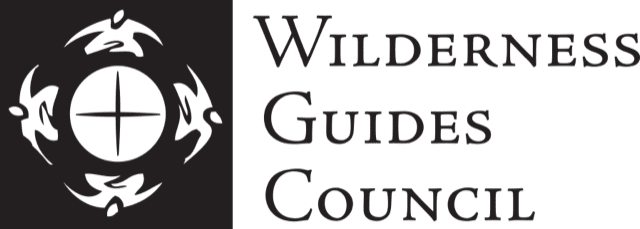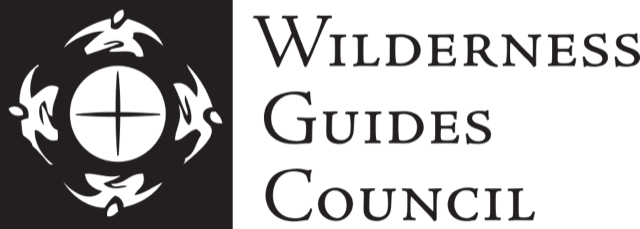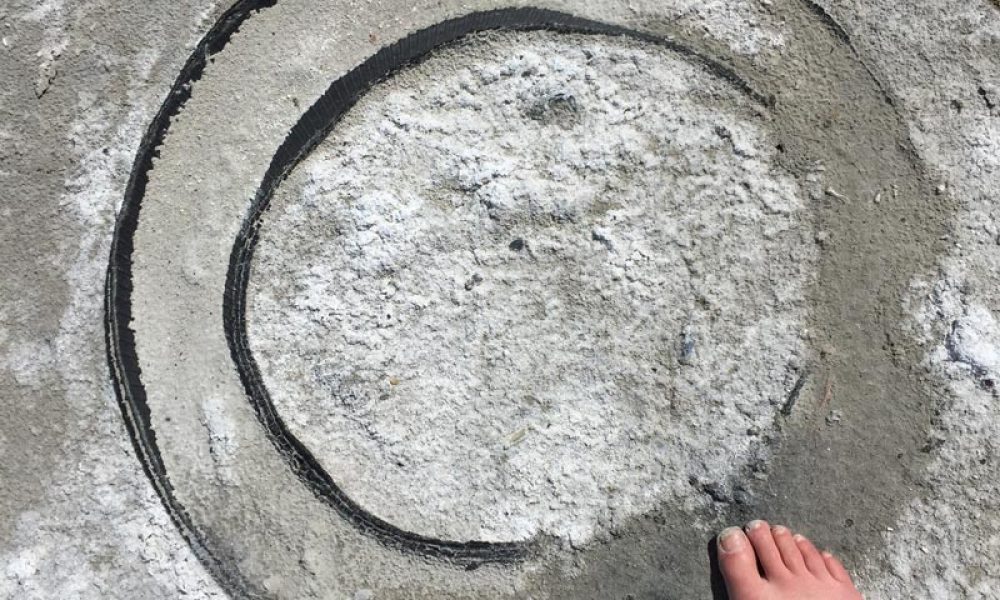Remembering and Reclaiming our Indigenous Soul
By Nancy Jane
There was a great lost world to be rediscovered and rebuilt, not in the Kalahari, but in the wasteland of our spirit where we had driven the first things of life, as we had driven the little Bushmen into the desert of Southern Africa. There was indeed a cruelly denied and neglected first child of life, a Bushman in each of us.
Laurens van der Post, The Heart of the Hunter
What has been lost in our understanding of what it means to be a human being with the eradication of indigenous peoples, their languages, their myths, and their spirituality? What might we regain by rediscovering or “remembering” indigenous wisdom? What lessons from their balanced, ecological relationship to all of creation can we apply to the spiritual and environmental crises of modern times—and to our work as vision fast guides?
In this age of fearing “cultural misappropriation,” I speak not about usurping the religious practices of native cultures but of identifying how, in our basic humanity, we carry an indigenous soul that innately knows oneness with the natural world, that understands the need for ritual to sustain both individual and community, and that is intimately connected to spiritual realms for healing and wholeness. Indigenous peoples around the world lived—and in some cases, still live—harmonious, sustainable, spiritually-nourishing, communally-rich lives thoroughly embedded in the matrix of the natural—as well as supernatural—world. These wise ways reflect a supreme degree of reverence for all beings, human and nonhuman; an active and conscious cultivation of relationship to Spirit by each individual for the health of both the individual and the whole community; an allegiance to special creation stories and myths which provide a unified world view; and an unshakable belief in both belonging to and being seen by the land and natural forces around them. Moreover, out of this unity of matter and spirit came healing, magic, and a devotion to the transcendent elements of life.
My vision of what wilderness rites of passage have to offer people today is sourced in recognizing what I call an “indigenous soul,” which passage rites call forth in each of us. We have an opportunity to wake up to our deepest unity with the natural and spiritual worlds. This sense of being an essential part of the fabric of the universe, part of the family of creation, attuned to and in constant communication with nature in all its forms, is the foundation of vision fast work for me.
Indigenous soul has both an individual expression and a collective one. A wilderness rite of passage is a journey to both our own interior and to that which connects us to an invisible, tangible web of energy that flows through the universe. In this “primordial dialogue” we can discover our capacity for full conversation with nature, something that is in our bones and is our ancient inheritance.
Primordial dialogue
In this primordial dialogue, we are both that which sees and that which is seen by nature. During a vision fast, this phenomenon is striking, though it defies logic. We become aware of the earth breathing us, holding us, loving us even as we embrace, give gratitude for, and honor the earth.
A high school senior on solo yearns to break free from the confines of family and school but is fearful of taking any step to break the bonds that hold her in old patterns of pleasing others. She chooses a solo spot in a square of very large boulders. When she awakens on the morning of return, she finds that spiders have woven their webs between all the boulders – and the only way out, to freedom, is to break them.
This reciprocity is what Gary Snyder calls the “field sensing of the world.” It is a cocreative, emergent process. We are in it and part of it, as kindred spirits, and our eyes are opened. Snyder recounts an experience of noticing a tree he has walked past many times before:
After twenty years of walking right past it on my way to chores in the meadow, I actually paid attention to a certain gnarly canyon live oak. Or maybe it was ready to show itself to me. I felt its oldness, suchness, inwardness, oakness as if it were my own. Such intimacy makes you totally at home in life and in yourself (as quoted in Nicholsen, 2002, p. 65).
David Abram calls this “participatory engagement” that “has formed us along with all other life forms. It is because we have patterned one another over time that our senses can engage in a reciprocal engagement that is perception” (as quoted in Nicholsen, 2002, p. 77).
These other shapes and species have co-evolved, like ourselves, with the rest of the shifting earth; their rhythms and forms are composed of layers upon layers of earlier rhythms, and in engaging them our senses are led into an inexhaustible depth that echoes that of our own flesh (p. 77).
Australian Aborigines and Dreamtime
They say we have been here for 60,000 years, but it’s much longer. We have been here since the time before time began. We have come directly out of the Dreamtime of the Creative Ancestors. We have lived and kept the earth as it was on the First Day.
Aboriginal tribal elder
Australian Aborigine myths, rituals, and cosmology may represent the oldest and deepest collective memory of the human race. Their Dreamtime represents a grand sacred time in the remote past when the Creative Ancestors, or Spirit Ancestors, traveled upon the earth and created the topography of the land and all its creatures. Moving across a vast, undifferentiated landscape, these great ancestral beings, or unbounded, intangible, vibratory bodies (like fields of energy), generated the physical manifest form. “The shape of the land—its mountains, riverbeds, and waterholes—and its unseen vibrations echo the events that brought that place into creation. Everything in the natural world is a symbolic footprint of the metaphysical beings whose actions created our world. As with a seed, the potency of an earthly location is wedded to the memory of its origin” (Lawlor, 1991, p. 1). Australian Aborigines preserve ancestor journeys in rituals, stories, ceremonies and habits of living that have been maintained for millennia.
Although the Dreamtime myth cannot be “proved,” it is important to note that it has sustained Australian Aboriginal culture for 50,000 years or more to live in harmony with nature. Evidence of Aboriginal culture can be found in caves in Tasmania dated to 50,000-80,000 years old. In the Dreamtime myth, there are stories of one earth land mass called Gondwana or Gondwanaland, which existed prior to the Great Flood which caused the world to separate into different continents. This aligns with the scientific theory of Pangea, one large land mass located near the South Pole that broke up to form the continents of today.
Dreamtime and modern day wilderness rites of passage
It is important to keep in mind that 10,000 years ago all of humanity—ten million people—lived as hunter-gatherers. Can we enter this lost memory of our race and of our origins to gain a better understanding of who we are and where we come from? By recollecting our origins, can we better imagine our future? How can this understanding enhance our guiding work?
Initiatory ceremonies such as the vision fast are vital gateways to the creative forces of the Ancestors and the Dreamtime. Between the death / severance phase of a rite of passage and the rebirth / reincorporation phase lies the liminal space of the threshold, which I have often referred to as the Dreamtime. This has meant a mythic time when all of nature speaks, imbues meaning, and mirrors the human soul. It also carries both the past events of the Spirit Ancestors and an energetic potency, which remains in the landforms. When I contemplate the seed potential residing in the earth that we can call out or evoke through ritual and ceremonies such as the vision fast, then I’m in awe of the innate wisdom we have tapped into.
An adult man speaks:
I believe the solo spot that I chose reflected something about my inner being, something to help me realize my soul aspirations. My solo spot was on top of a little hill exposed to the elements of the world with a small tree growing in balance and health at its summit. The hill itself was located near the center of the canyon, so that I could see and be seen from all directions. For me I saw the image of a mountain surrounded by a sacred circle of family and loved ones, standing exposed and out in the open, exemplifying strength, courage, sensitivity, and love. Throughout the solo and during the all-night vigil I remained exposed to the elements, in the center within, while praying with gratitude for guidance and protection for myself, my family, community, and the world.
Lawlor (1991) comments on the quote from the Aborigine tribal elder. “ ‘The time before time began’ refers to that timeless moment in which the Aborigines balanced their consciousness between the creative unconscious and the created world. The mysterious statement, ‘We have come directly out of the Dreaming,’ relates to an idea that science and religion have grappled with for centuries, the substantiation of invisible realms into matter” (p. 123). Yet this is a key tenet of Aboriginal cosmology, that the dream, the subjective, the invisible, always precedes any physical manifestation. Only now are scientists acknowledging the Zero-Point Field, a “pulsating energy field [that] is essentially the central engine of our being, our consciousness, of the world” (McTaggert, 2009, p. 11). McTaggert continues:
…if we are all connected by this Field, it means there is no ‘me’ or ‘not me’ in relation to the rest of the universe. According to this paradigm, cells communicate through quantum frequencies, the brain communicates through quantum frequencies and all living things are in constant communication with the environment. This means that our consciousness is not locked up in our skulls and isolated but reaches out and affects our world. (p. 11)
Such a statement from the scientific community parallels the teaching of the Dreamtime, which Australian Aborigines have proclaimed and sustained for millennia. I believe it is still possible to renew the Dreaming in these modern times and to thus revitalize our relationship to the natural world, our rites of passage, and all of life. This is the birthright of our indigenous soul.
Stories and myths as part of indigenous soul
It was through storytelling, myths, and dreams that indigenous peoples expressed their cosmology and identified their place in creation. Toward these myths they showed their utmost dedication. “Indeed, the primitive world regarded the preservation of first spirit as the greatest, most urgent of all its tasks. It designed elaborate ritual, ceaselessly fashioned myths, legends, stories and music to contain the meaning and feed the fire of the creative soul” (Van der Post, 1961, p. 141).
When fasters return from the threshold time, they bring a story that encapsulates their deepest yearnings and truest understanding of who they and what their gifts are. It is in our stories, shared and unshared, that we find our aliveness and our core truths. We have lost our true guiding stories in modern times, ones that guide our relationship with the cosmos and all of life and that are filled with inward vision and potency of meaning. The tragedy of this cannot be underestimated in terms of a rich and healthy evolution of human consciousness. Van der Post (1984) recalls a conversation with Carl Jung on the importance of story:
…in a discussion I had with Jung about Bushman stories and my belief that whole civilizations had been destroyed because their stories had been taken away from them by the intrusion of a physically powerful and alien culture…[Jung] nodded his fine white head… to tell me at great length, how his work as a healer did not take wing—the metaphor is mine—until he realized that the key to the human personality was its story. Every human being at core, he held, had a unique story and no man could discover his greatest meaning unless he lived and, as it were, grew his own story. Should he lose his story or fail to live it, he lost his meaning, became disorientated, the collective fodder of tyrants and despots, or ended up, as so many did, alienated and out of their own minds….(p. 138)
A woman enters the Death Lodge during her solo. Friends and family come to visit, and she speaks to them with an open, loving heart. The last person whom she greets is herself: “Thank you, body, for carrying me so far in life, for surviving much sickness. Thank you, mind, for keeping me sane and whole when circumstances might have driven me to addiction. Thank you, my spirit, for remaining curious and not settling for any religion or spirituality. Thank you, emotions, for reminding me that I am connected to others and love fully.” The power of this surprising encounter affirms to her that she is visible and important and changes the story she has long held about herself as not worthy of respect and ashamed of her needs and desires. She emerges empowered and committed to her new view of herself.
Be humble for you are made of earth. Be noble for you are made of stars.
Serbian proverb
Wilderness rites of passage are an important tradition to help us find our way home to our co-creative dance with all of life. They provide a vital link to the first man/first woman in us, to our innate indigenous soul and our instinctive sense for the meaning of life and our place in it. We are all primitive women and men at the core of our being.
My gratitude goes out to the ancient ones and their instinctive understanding of the necessity for ceremonies such as wilderness rites of passage, to help us enter a deep, primordial dialogue with nature, to feel how we belong, and to know our unity with all things. I honor present day indigenous peoples who continue to endure extraordinary hardships to preserve their rituals, cosmologies, and intimate alliance with all of creation. We, too, carry a primordial essence, an indigenous soul, that knows our unity with all things. May we continue to remember this and, though wilderness rites of passage, support others in their own remembering
References
Drury, N. & Voigt, A. Wisdom from the earth: The Living Legacy of the Aboriginal Dreamtime. (Boston, MA: Shambhala Publications, 1997).
Lawlor, R. Voices of the First Day: Awakening in the Aboriginal Dreamtime. (Rochester, VT: Inner Traditions, 1991).
McTaggert, L. “Learning from Indigenous Cultures: How to Live in the Now. Light of Consciousness, Journal of Spiritual Awakening (Vol. 21, No. 1. Spring 2009). Tucson, AZ: Truth Consciousness.
Nicholsen, S.W. The Love of Nature and the End of the World: The Unspoken Dimensions of Environmental Concern. (Boston, MA: Massachusetts Institute of Technology, 2002).
Taylor, J. & van der Post, L. Testament to the Bushmen. (New York, NY: Viking, 1984).
Van der Post, L. The Heart of the Hunter. (New York, NY: William Morrow and Company, 1961).


